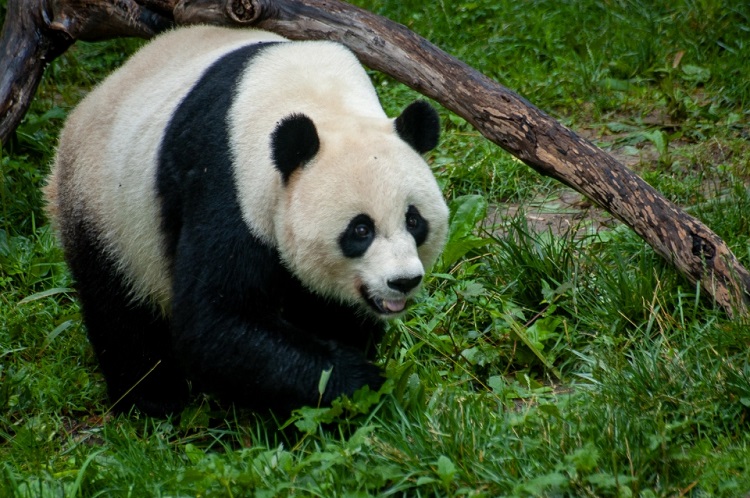There isn’t a person on this earth who doesn’t recognize those unmistakable black eye patches as belonging to a Giant Panda. The world adores them, and in China, they are even considered a national treasure.
But with all this love for giant pandas, why are they still endangered? We look at the bigger picture and see what impact the decline of these fantastic bears has on the habitats that they live in.
About the Panda
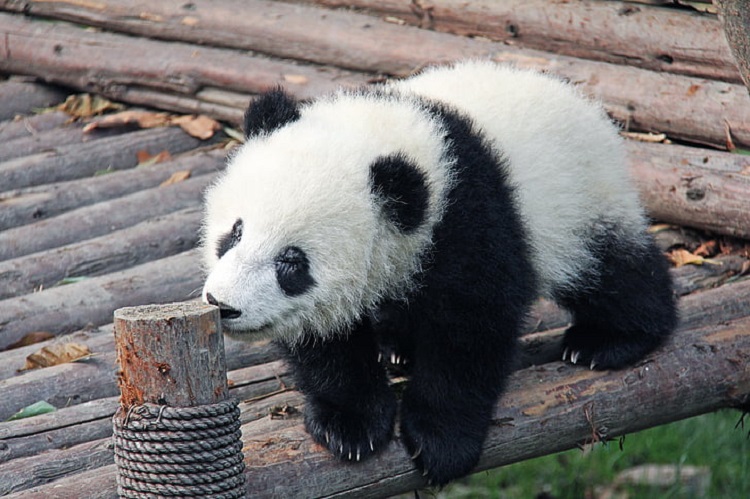
The black and white bear is the iconic symbol of the World Wildlife Fund and has been referred to as an endangered animal. They have also been called living fossil as it is believed they have lived for over three million years, another reason to keep fighting for these real-life teddy bears.
But the good news is that there has been a recent change to the panda’s status. The International Union for the Conservation of Nature has removed it from the endangered list and instead classed them as vulnerable.
Don’t get me wrong, this doesn’t mean that we don’t have to worry about them, but it does mean that, as humans, we may be doing something right when it comes to our efforts for conservation and that the wild giant panda population is on the rise.
What Do Pandas Look Like?
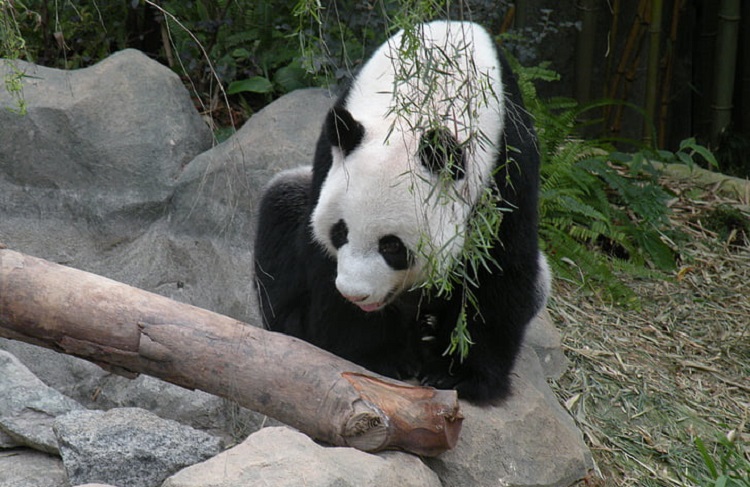
Giant pandas are typical-looking bears except for the black and white colour patterns on their fur, which is something that scientists can not explain.
But some, including professor Nick Scott Samuel, believe that their unique coloring provides them with the perfect camouflage in dense bamboo, and a stationary panda becomes almost invisible when on snow-covered mountains.
However, the only flaw in this brilliant explanation is that pandas have no natural enemies, so what would they need to be hiding from to start with?
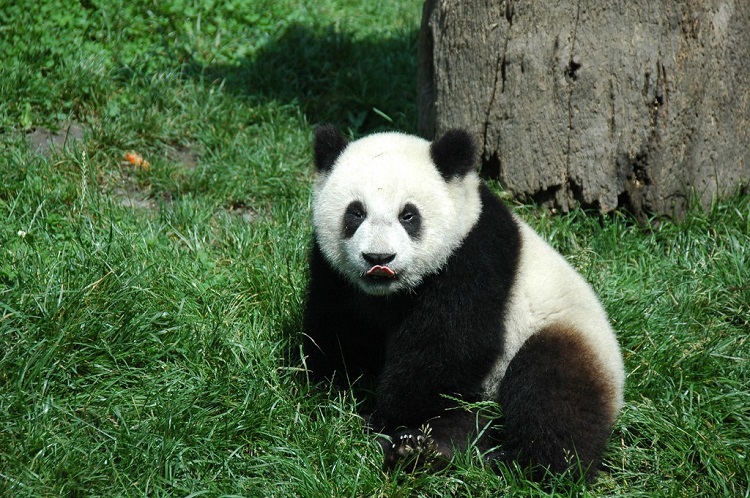
These giant fur balls have lived in the bamboo forests of south-central China for millions of years, and in order to have done this so successfully for so long, they have had to become specialized animals with some unique adaptations.
These include a thick wooly animal’s coat that helps keep them warm in the cool forests, and their large molar teeth and strong jaw help them crush bamboo, which is what pandas eat.
They also have enlarged wrist bones which work a bit like our thumbs allowing them to hold the bamboo in their paws, and this is undoubtedly the iconic image of a panda that you have in your mind.
What Are Panda Bears?
The giant panda is a species of bear, but they can also be known by their Latin name Ailuropoda melanoleuca, panda bears, or just pandas. But whichever variation you choose, they all refer to the same black-and-white cuddly bear that we are familiar with.
But these giant bears also share characteristics with raccoons meaning that there has been some debate as to which group they should actually be classified as. But thanks to scientific reports of pandas’ DNA it has clearly shown that they are part of the bear family.
Where Do Pandas Come From?
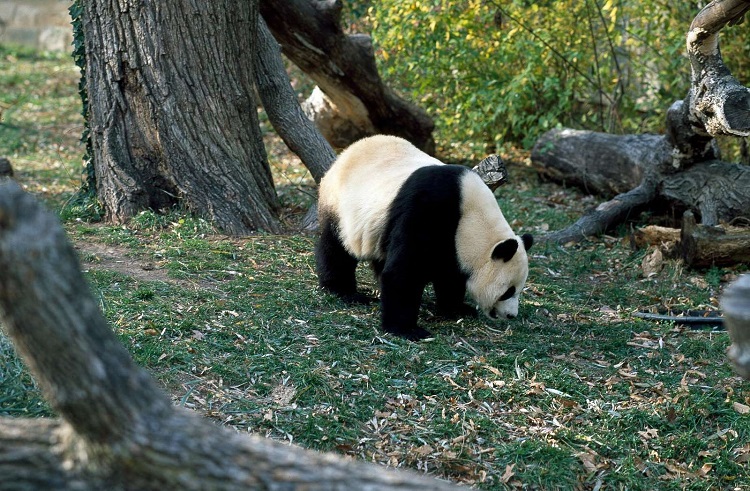
Giant pandas live in the Sichuan, Shaanxi, and Gansu provinces of south-central China, with a few mountain ranges.
They also lived in the lowland areas, but human encroachment on their habitats through farming and other developments means that they now tend to stay in the mountains away from human interations.
Taxonomy
If biology was your favorite subject like me, you might have some idea of what taxonomy is, but you may also have absolutely no idea what it is or what it has to do with giant pandas. In simple terms, taxonomy is the scientific classification of living things, and here is how the Giant panda’s taxonomy breaks down.
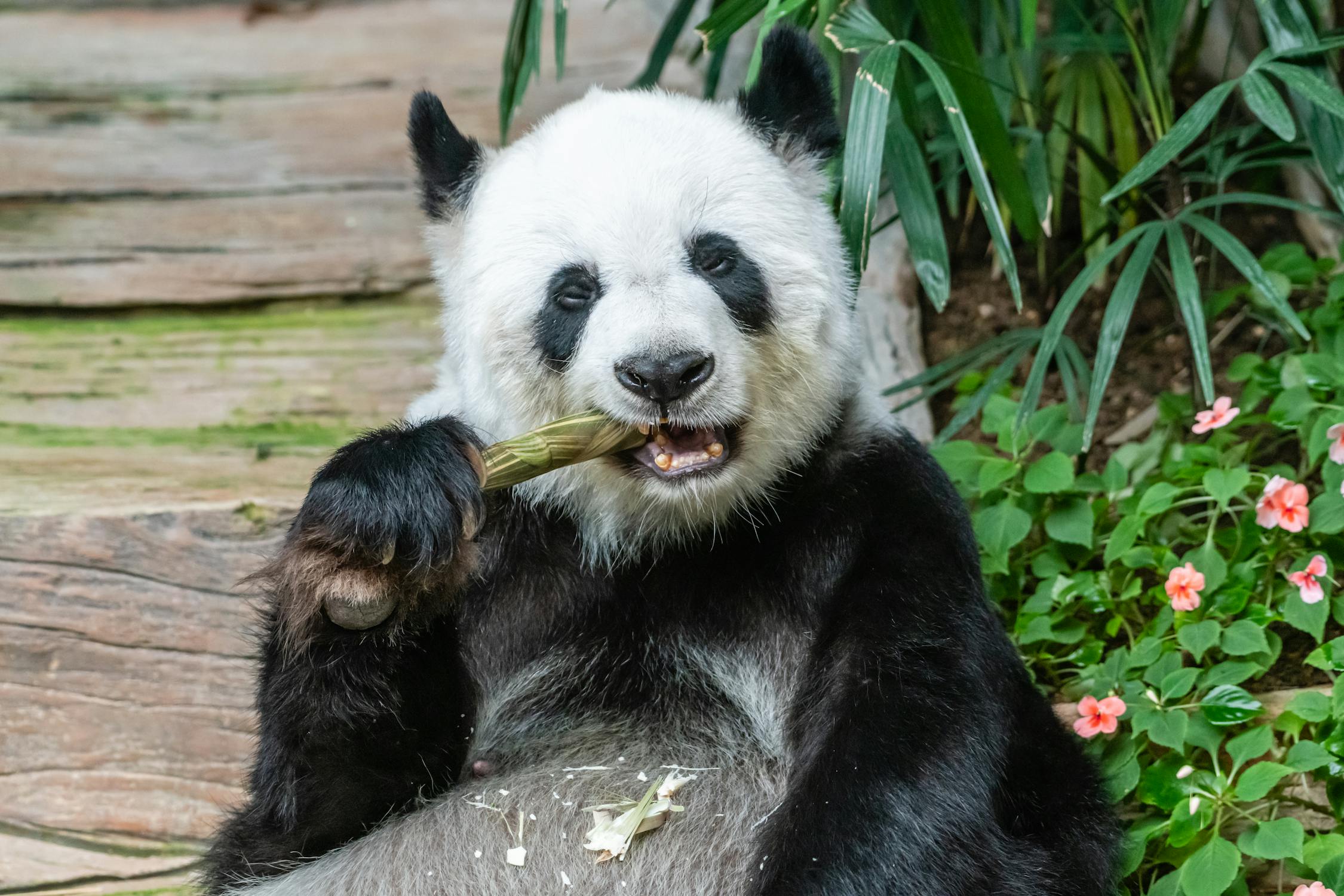
Classification
Mammalia
Etymology
Panda as a word was originally borrowed from French, but as of today, there is no real explanation as to where the French word actually came from. There are several possible theories from Nepal, Chinese, and Taiwan but nothing concrete.
Subspecies
There are only two subspecies of panda that are recognized, and these are based on several body measurements, coat colors, and shared genetics. They are A.m. melanoleuca and A.m.qinlingensis.
Phylogeny
Ursidae and Ursinae
Scientific classification
Ailuropoda melanoleuca
Detailed Description
Below is a detailed description of the giant panda’s pathology and genetics.

Pathology
Giant pandas are warm-blooded animals in the same way as humans, and certain diseases and infections affect only warm-blooded animals.
In 2014, a female panda called Jin Yi died at a zoo in China from what appeared to be gastroenteritis and respiratory problems. But it was found that the actual cause of death was toxoplasmosis, a parasite that only affects warm-blooded animals.
Genomics
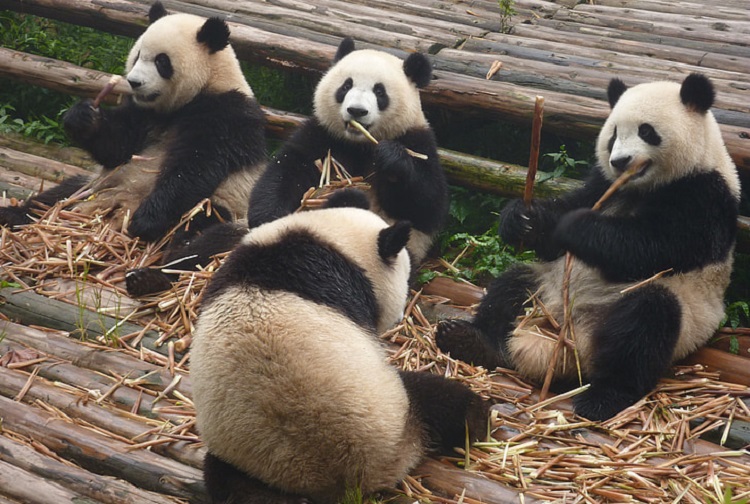
The giant panda’s genome was sequenced in 2009 using a technique called Illumina dye sequencing, which is used to work out the base pairs of DNA, also known as DNA sequencing.
The giant panda genome contains 20 pairs of chromosomes and one pair of sex chromosomes, which is only two pairs less than our own DNA.
Ecology
Even though giant pandas are classed as carnivores, their main diet is normally the same as a herbivore, and in fact, their diet is almost entirely made up of bamboo.
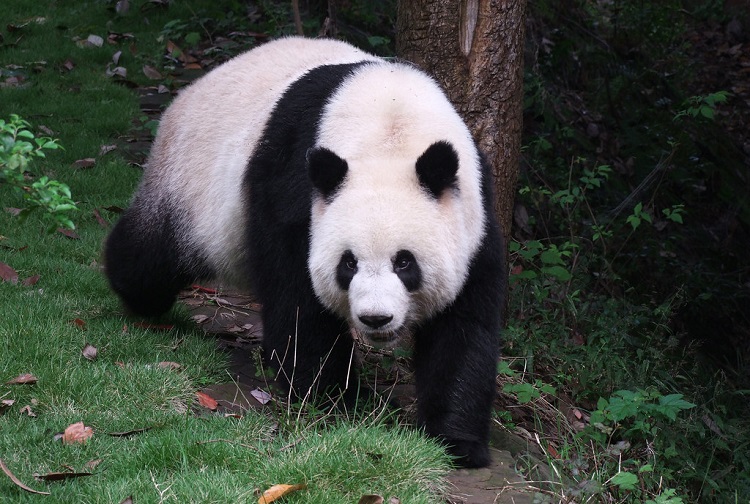
Diet – What Do Giant Panda Eat?
Almost all of the giant panda’s diet is made up of bamboo, but they have the body and digestive system of a carnivore, now this can cause problems for pandas as they can’t get a lot of calories or nutrition from the bamboo they eat.
Pandas put on a lot of weight between April and August, this is the shoot season for bamboo, and the weight that they gain during this time allows them to safely make it through August to April when the nutrition they need is scarce.
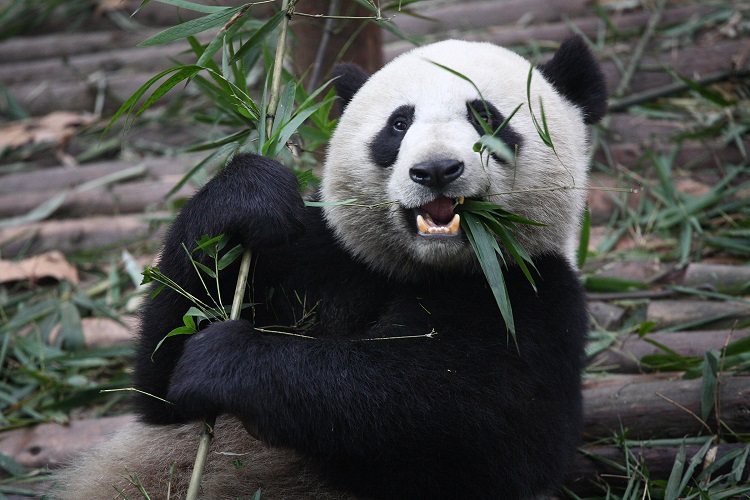
An adult giant panda can eat as much as 20 to 30 pounds of bamboo shoots a day, but eating this amount of indigestible plant material also means that what goes in must come out, and pandas are known to poop around 40 times a day. Yikes!
Now you may think that only one species of bamboo makes up a pandas’ diet, but you would be wrong, as in order to survive, they need at least two species of bamboo in their diet.
There are over twenty-five wild bamboo species, although not many of these grow in the bamboo forest at the high altitudes where a giant panda lives.
Predators

Adult giant pandas have no natural predators except for humans. This is mainly because they are immensely strong bears and tend to live in isolated locations.
But giant panda cubs are vulnerable to attack from snow leopards, yellow-throated martens, wild dogs, and other animals who are more than capable of killing and eating a panda cub.
Behavior of Pandas
Giant pandas live in central China and tend to roam large areas feeding on bamboo forests. Surprisingly they are generally solitary animals, and each panda has its own marked-out territory.
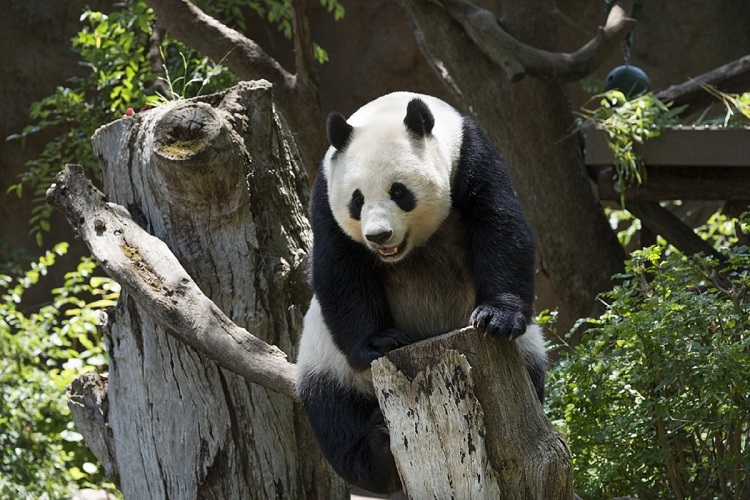
Now female pandas will not tolerate another female on their land and only get into social interactions during the breeding season when pandas that live close by will gather.
Olfactory Communication
This is not as complicated as it sounds and, in simple terms, means that pandas communicate through chemical cues such as scent marks. This scent mark gives other pandas information such as their sexual status, age, gender, territory, and even their choice of where the other panda settles.
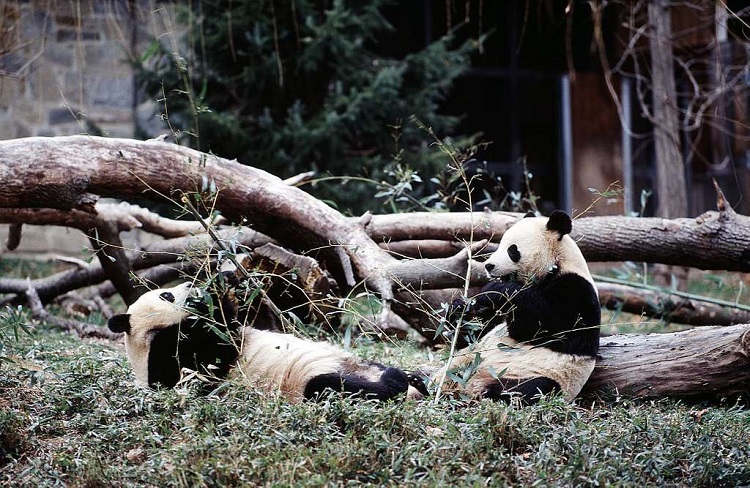
All of this information is found in urine, vaginal and anal secretions. However, each panda has a unique way of scent marking; males lift their hind leg or rub their backsides on tree trunks, while females squat and rub their genitals on a particular landmark.
Reproduction and Lifecycle
The breeding season for females is very short and only lasts between March and May, so to ensure that the males know they are ready to mate, the females use scent marks.
Giant pandas reach sexual maturity around age four to eight, but it is possible for them to still be able to reproduce until the age of 20. Pregnancy lasts from 95 to 160 days, and more than half of pregnancies are twins.
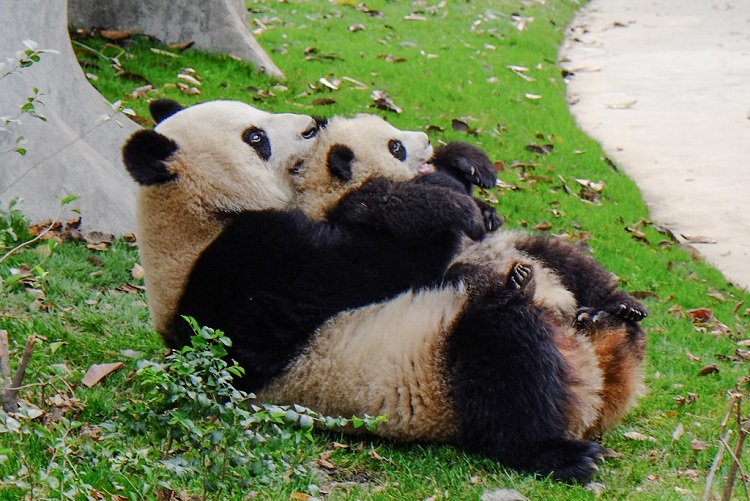
However, in the wild, only one cub would normally survive, as the mother would pick the stronger one and let the other one die of starvation.
Did you realize how small a baby panda is? They are about the size of a stick of butter, which is around 1/800th of the size of their mom. Daddy pandas have nothing to do with raising their cubs and leave the female once they have mated.
Breeding in captivity has not always gone to plan and has proved extremely difficult to do. But in July 2009, Chinese scientists confirmed the birth of the first successfully conceived cub through artificial insemination from frozen sperm.
This new way of breeding captive pandas was developed in the breeding center in Chengdu and could be the breakthrough that will save the wild panda population.
Sleep Habits
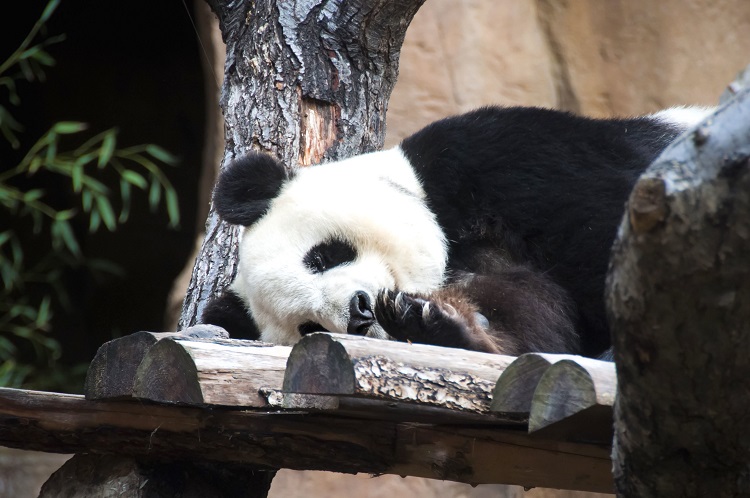
Giant pandas are not the most lively of animals, and if they are not eating or foraging for food, then they are either lying around or sleeping. This means they can spend up to 12 hours a day snoozing.
It was believed that pandas were actually nocturnal animals, only becoming active at night, but this has since been disproven. They just spend a lot of their day eating and the rest just relaxing and having an afternoon snooze.
Human Use and Interaction
The panda is an animal that has been revered by royalty for centuries. It has taken center stage in many ancient books, and many animals from legends have been interpreted as pandas.
Western Discovery
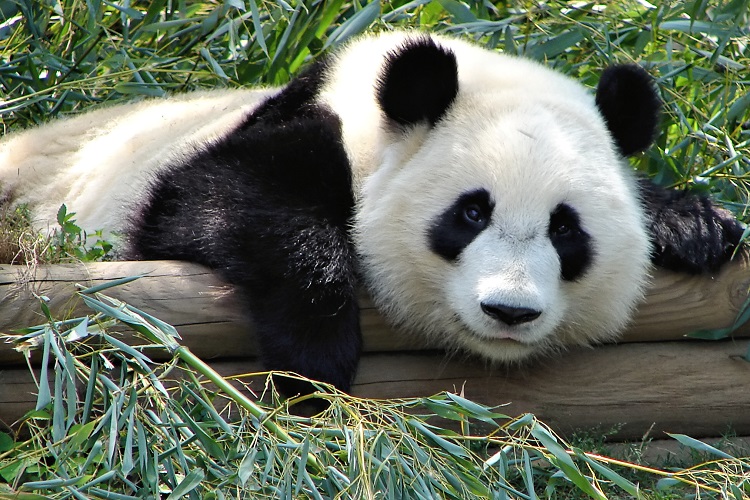
11 March 1869 is when the west first became aware of the giant panda when a French missionary received a skin. In 1916 Hugo Weigold, a German zoologist, purchased a giant panda cub and became the first westerner to see a living panda.
For many years after this, pandas were shot, captured, and transported all over the world for the amusement of humans. Many of those pandas that were captured only survived a few days, while others lived for many years in zoos across the west.
London zoos’ last panda was Ming Ming, who was on loan from China to provide a mating opportunity for the species; unfortunately, it was unsuccessful.
Panda Diplomacy
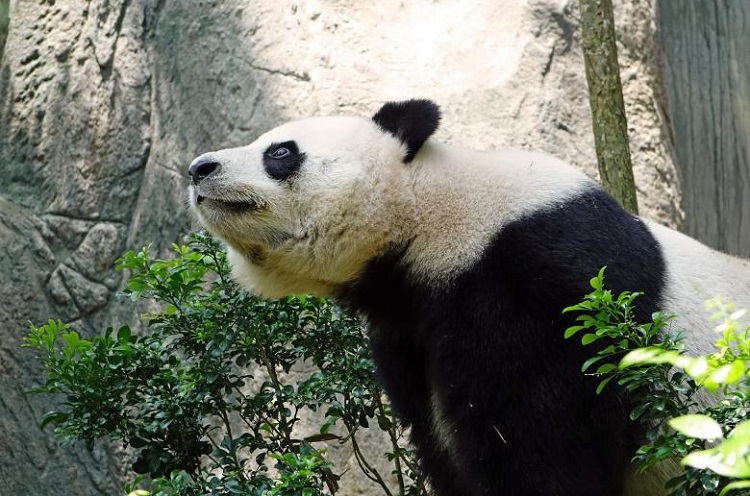
The term panda diplomacy came about when pandas were gifted to American and Japanese zoos by the People’s Republic of China. These would have been the very first cultural exchanges between China and the west.
But the gift-giving didn’t last, and China began the practice of loaning out their giant pandas for a fee of $1,000,000 a year, along with the note that any offspring born during this time were the property of China.
This didn’t last long, and in 1998 a lawsuit by the WWF brought about the decision that a US zoo could only import a giant panda if that zoo could ensure the Chinese government would use at least half of the fee into the conservation of the giant panda and its habitat.
This ruling does mean that China now owns almost every panda in the world.
Panda in Zoos
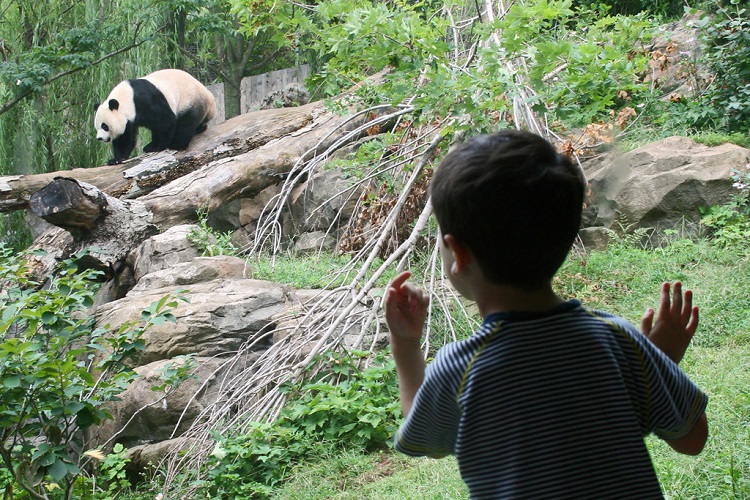
In China, pandas have been kept in zoos since the Western Han Dynasty, and they were considered one of the most treasured animals of the emperor. But it wasn’t until many years later that the next panda in a Chinese zoo was recorded.
Western zoos have had a loan on pandas from China for many years, but these beautiful animals are an expensive addition to any zoo.
In 2006 the New York Times stated that they were five times more expensive than an elephant, which means many zoos are not in a position to offer a place for a giant panda.
Conservation Status
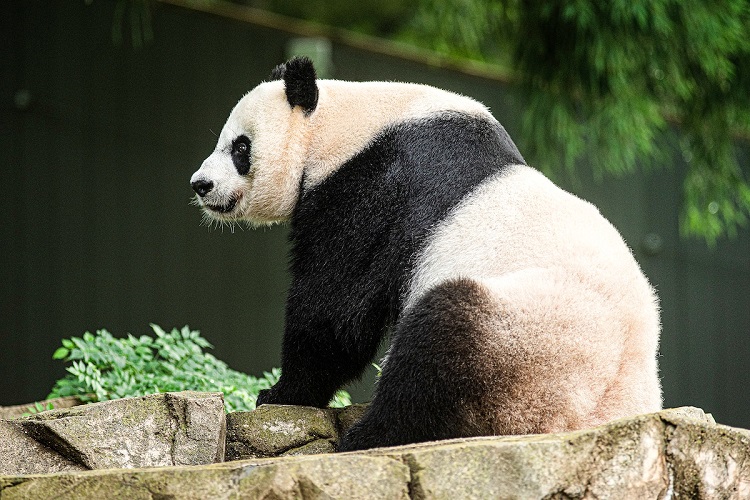
Poaching by locals for the panda’s soft fur has also been an issue in the past as well as hunting them for meat during times of famine, making them a threatened species.
The giant panda has now had its status changed to vulnerable, but they are still threatened by habitat loss and their low birth rates.
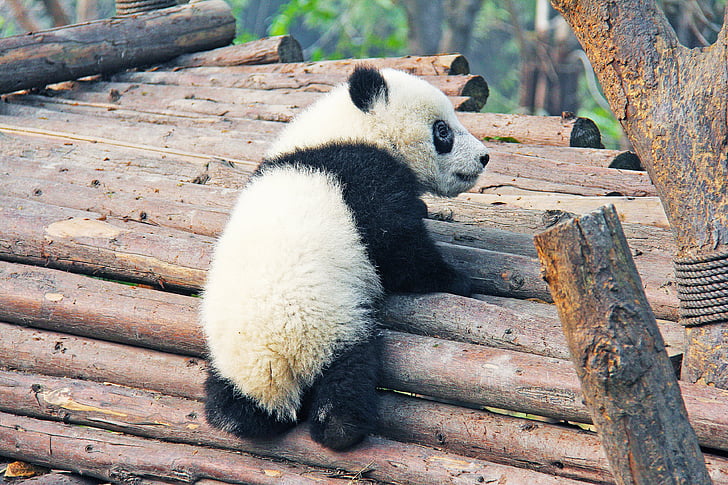
However, even with this change in classification, the efforts of conservationists have not dropped and, in fact, have increased. The giant panda is the only animal whose natural habitat has been designated as a world heritage site.
But the good news is that it appears that the wild panda population had been underestimated by over 1000, and this may be due to the increased number of panda reserves between 1998 and 2006.
Population
The table below shows the giant panda population in different years, in the wild and in captivity, according to the Chinese Government Forestry Administration.
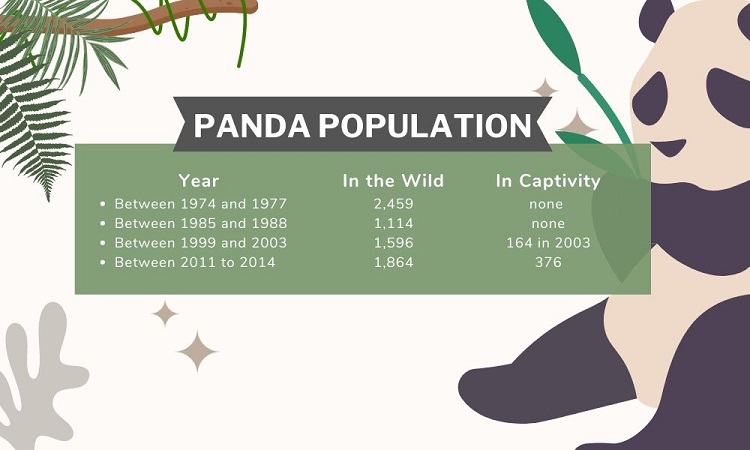
Biofuel
Now if these teddy bears are not amazing enough, it is also thought that microbes found in pandas’ waste can actually be used to make biofuel out of bamboo and other plant materials.
Facts About Pandas
Most people know the basics about pandas, such as what they eat and where they live, but did you know there are some fascinating less-known facts about these cuddly creatures that are even more interesting?
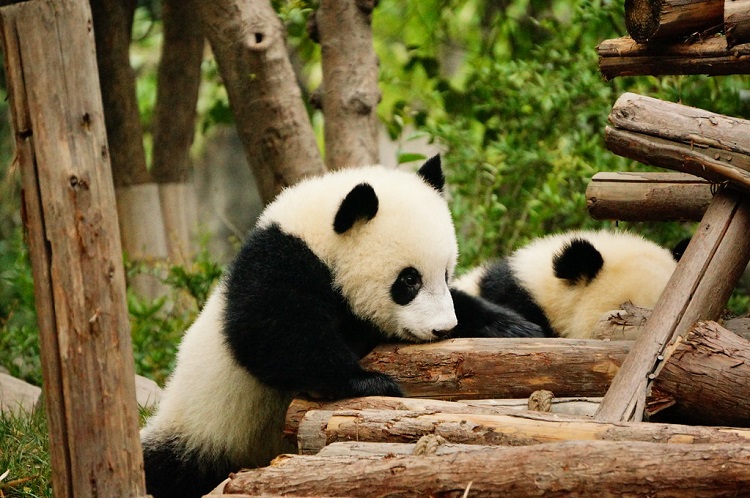
- The panda is one of the rarest mammals on earth.
- They spend around 12 hours a day just eating, and they eat fast!
- Bamboo makes up around 99% of their food but they have been known to eat fish, small mammals, and other vegetation if they need to.
- Giant pandas can climb up to 13,000 feet and they are fantastic swimmers – who would have thought something that big could climb and swim?
- These black and white teddy bears are also really really shy so they stay well away from areas that humans live in.
- Male pandas have been known to do a handstand against a tree simply to relax, well we all need a way to get rid of those daily stresses after all.
Where Do Panda Bears Live?
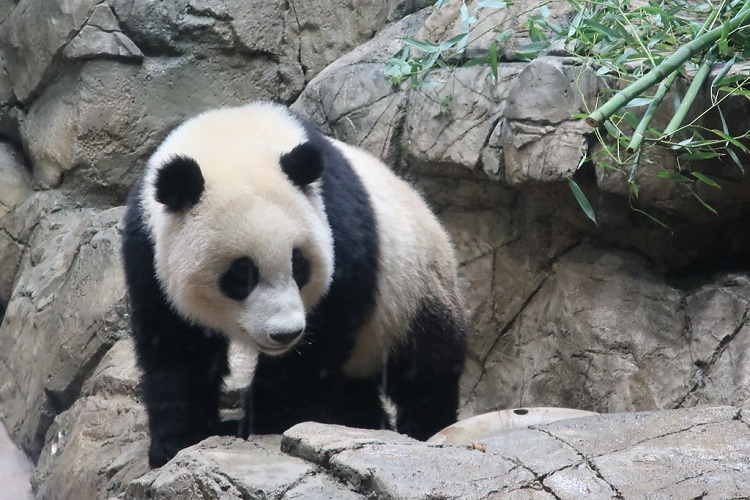
The giant panda was once found throughout China, Vietnam, and Myanmar, but due to the increase in the human population, they are now only found in a few remote bamboo forests in mountain ranges in Sichuan, Shaanxi, and Gansu provinces.
Crucial Role in the Forests
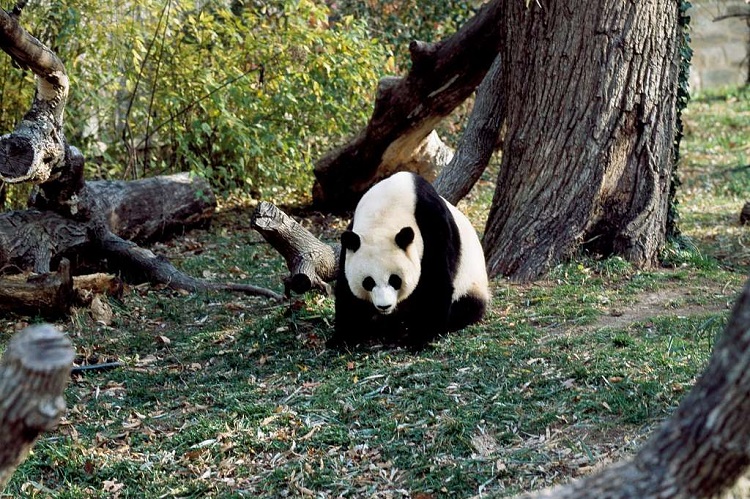
Giant pandas play a crucial role in the ecosystem in which they live, spreading seeds and plants across their entire habitat.
This is done as seeds and plant matter get caught up in the pandas’ fur, and then as they go about their business, eating, sleeping, climbing trees, and swimming throughout their habitat, they spread the seeds simultaneously.
Panda’s Lifespan
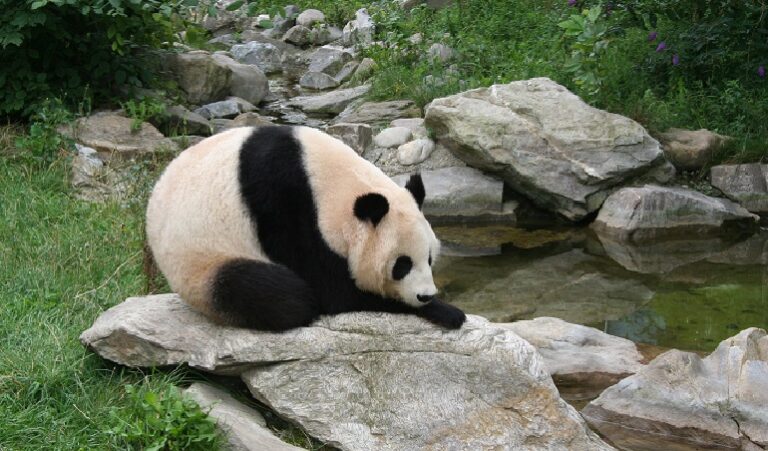
It is difficult to estimate a wild panda’s lifespan as they are such solitary animals, but scientists believe it is considerably less than that of captive pandas. A panda in the car of a human can live for up to 30 years, while scientists estimate wild pandas probably only live to 15 to 20 years old.
How Many Pandas Are in the World
It is estimated that there are between 1,800 to 2,000 wild giant pandas in the world, but this number doesn’t include those pandas living in captivity in zoos throughout the world. This number is thought to be around 400, according to Pandas International.
Why are Pandas Endangered

Giant Pandas have been on the endangered list for well over fifty years, and their fight for life is mainly due to habitat loss from people encroaching on their natural habitats in forests.
There also have been developments in the infrastructure, such as dams, railways, etc. which are isolating panda species and making it hard for them to find new forests and mates.
Do Pandas Attack Humans
Don’t be fooled by their cuteness, as giant pandas can be quite dangerous to humans; remember, they are part of the same family as any other bear and come with strength and large claws.
But in the same breath, you will not hear of a panda attack on a human very often. These happen infrequently and only occur when a panda feels threatened or annoyed by a human. For the most part, if pandas encounter a human and have the chance to flee, they definitely will.
What Is the WWF Doing For Pandas?
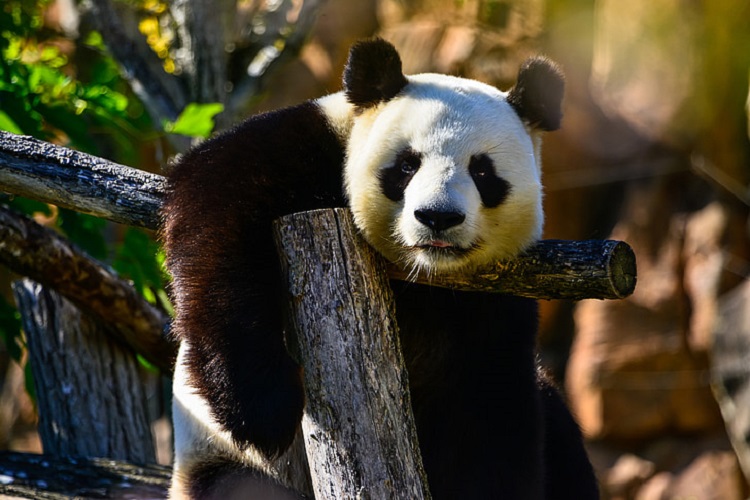
The WWF has been working with the Chinese government since 1981 to help secure the future of this national treasure.
They have helped to set up a network of panda reserves across China. The WWF has also been working with local communities to develop livelihoods that are sustainable for humans and minimize the impact on the pandas’ natural habitat.
These panda reserves now protect two-thirds of the wild panda population as well as some of the largest bamboo forests in the world, which in turn go on to provide shelter for a vast number of other species, including people who live in the lowland areas downstream of the panda habitats.
Conclusion
Everybody loves these real-life teddy bears with their white coat and black fur, and there is no doubt that the fact they are no longer endangered is just amazing. But this doesn’t mean we should stop our conservation efforts; it just means that we are doing something right.
Thanks to these efforts, the giant panda numbers are finally on the rise, and it looks as though there is hope for this amazing animal!


